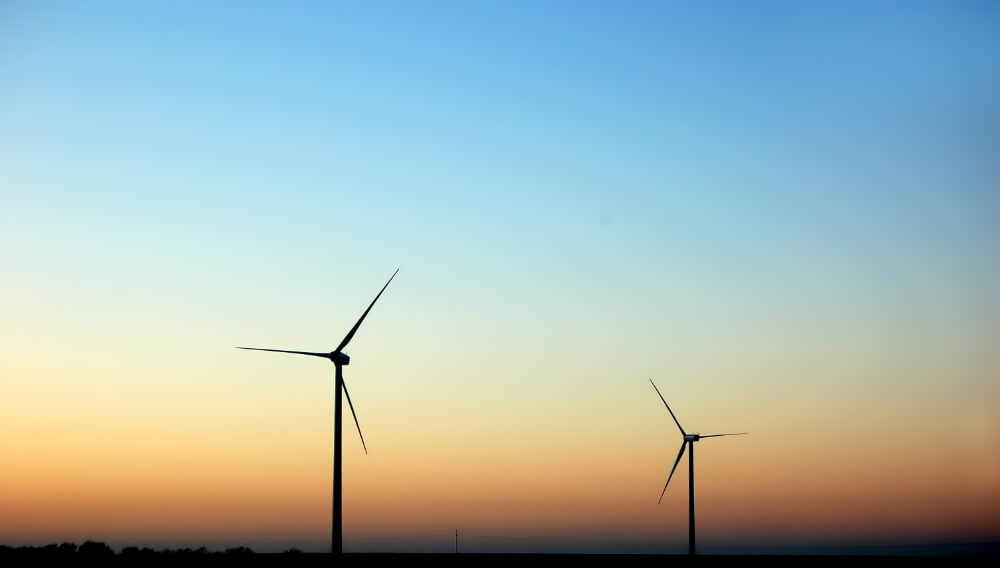Wind energy has emerged as one of the most prominent sources of renewable energy for India while adding much to the country’s sustainable energy goals. The country is increasingly investing in clean-energy technologies, and thus, new wind farms across the country have gained much prominence. However, like any other tall structure, wind turbines are vulnerable to lightning strikes, which can be catastrophic in case it are not well protected. It is in this regard that the lightning protection system for wind turbines in India assumes importance.
This blog post discusses why wind turbines need lightning protection systems, the risks involved due to lightning strikes, the components of an effective lightning protection system, and the role of companies like Aashapuri Engineering Pvt Ltd in providing these solutions. This knowledge will enable stakeholders in the wind energy industry to take all the necessary steps to safeguard their infrastructure and ensure the continued efficiency of wind farms across India.
Significance of Wind Energy in India
India is one of the fastest-growing economies in the world, and with this rapid development, an increasing demand for energy is associated. As regards the consumption of fossil fuels, the state is heavily dependent on it, which not only causes air pollution but also threatens its energy security. Thus, India is focusing on renewable energy sources to meet its growing requirements for energy.
Of the different sources of renewable energy, wind energy has gained significant attention over the last few years because of its sustainability, low operating costs, and minimal environmental impacts. India is one of the largest producers of wind energy in the world by 2023. Many inland regions and coastal regions of the country have a very high potential for wind energy. The states that have already initiated establishing wind farms are Tamil Nadu, Gujarat, Maharashtra, Karnataka, and Rajasthan.
Since the expansion of wind energy has also made the case for the protection of turbines as well, its major installations of wind turbines are at risk of lightning storms and thunderstorms. It should, therefore, understand how and why lightning strikes these structures. Tall structure most above 100 meters, with metallic component size makes them vulnerable to lightning strikes. Thunderstorms are frequent in India, especially when the monsoon season strikes, hence there is a higher chance that lightning may strike these wind turbines. Lightning strikes can severely damage electrical and mechanical parts of the turbine, leading to expensive repair bills, extended periods of downtime, and even complete turbine meltdown.
Direct Hits from a Lightning Strike A lightning strike can hit directly onto the turbine blades, tower, or electrical components of the turbine. This can cause several types of damage.
Damage to Blades: If lightning hits the blades directly, there will be physical damage in the form of cracks or burns. The turbine efficiency will be decreased since the blades are unable to capture the energy present in the wind.
Electrical Failures: The lightning traveling through the metallic structure of the turbine can destroy the sensitive electrical parts of the system including the control systems, power electronics, and generator with expensive repair and downtime.
Fire Hazards: The lightning will cause a fire in the turbine. Flammable materials, in addition to the electrical systems, increase the risk of causing destructive fires to the entire wind turbine.
Operational Downtime: Even though the turbine is not heavily damaged, a lightning strike can cause it to go down. The control systems and sensors can be disabled, and no power will be generated until the turbine is repaired.
If one takes into consideration repair and maintenance costs as well as downtime, then it’s easy to see why having a good lightning protection system is so crucial for wind turbines.
A lightning protection system for wind turbines is constructed to protect the turbine from lightning by safely dissipating the electrical energy of the lightning strike from sensitive components. The key objective of the LPS is to reduce the impact that can be inflicted on the turbine and to keep it functioning during harsh weather conditions.
A good lightning protection system consists of the following components:
Air Terminals (Lightning Rods): These are placed at the highest points of the wind turbine, commonly on the rotor blades or at the top of the tower. The air terminals act as the first point of contact for a lightning strike. They attract the strike so that it doesn’t hit the critical parts of the turbine.
Down Conductors: After the lightning has been attracted by the air terminals, it is safely conducted down the tower through the down conductors. The conductors are copper or aluminum, which are excellent conductors of electricity.
Grounding System: The last component of lightning protection is the grounding system. This system safely conducts the electrical energy from the strike into the earth. A grounding system designed well ensures no damage to the electrical systems within the turbine and no chance of fire breakout.
SPDS-Protect sensitive electrical equipment from the high voltage formed by lightning. SPDs are used inside electrical panels on the turbines; the SPD ensures that no damage is done to the electrical components due to transient voltages.
These components come together as an all-integrated lightning protection system for safeguarding the safe diversion of lightning energy so that damage to this wind turbine is minimized, and wind turbines can perform for a more extended period of time.
Why India Needs Lightning Protection Systems for Wind Turbines
The specific geographical and climatic conditions of India require the installation of lightning protection systems in wind turbines. The nation experiences frequent thunderstorms, mainly in states like Tamil Nadu, Maharashtra, and Rajasthan, where wind farms are set up. Here, a storm of high winds, hot temperatures, and frequent thunderstorms creates the perfect setting for lightning strikes.
India is scaling its wind energy sector rapidly, and most such installations are located either at high altitudes or in coastal regions that are more likely to experience extreme weather. Such locations are already subject to the danger of a thunderstorm, but in other ways present several issues like lack of proper infrastructure, which can delay repairing or maintenance work in the case of damage by lightning. Thus, the costs incurred on account of damage by lightning and downtime could significantly be influenced by the financial feasibility of wind farms.
Effective lightning protection for wind turbines in India would more than well be a commercial necessity; it would not be one from a technical standpoint, but a business necessity indeed. The energy generated using these turbines is vital for the increasing energy requirements that the country faces, so any loss of productivity created by lightning strikes would amount to the loss of power thereby causing financial loss.
The Significance of Aashapuri Engineering Pvt Ltd in offering Lightning Protection Solutions
Aashapuri Engineering Pvt Ltd is a leading provider of reliable lightning protection systems for wind turbines in India. Being an electrical and lightning protection solution provider, Aashapuri Engineering Pvt Ltd offers a wide range of products and services designed to protect wind turbines from lightning strikes and other electrical hazards.
Why choose Aashapuri Engineering Pvt Ltd?
Expertise and Experience: Aashapuri Engineering Pvt Ltd, with years of experience in the electrical engineering and lightning protection fields, is aware of the specific requirements of wind turbines in India. They ensure that each lightning protection system is tailored to the needs of the turbine and its location.
Comprehensive Solutions Aashapuri Engineering Pvt Ltd offers complete lightning protection solutions with the design, installation, and maintenance of air terminals, down conductors, grounding systems, and surge protection devices. Their end-to-end services ensure correct installation and smooth operation of the protection system.
High-Quality Product: The company uses superior-grade materials specially designed to withstand the harsh environmental conditions common in India. Whether it is the intense heat of Rajasthan or the coastal humidity of Tamil Nadu, the products provided by Aashapuri Engineering Pvt Ltd are built to last.
Standards Compliance: Aashapuri Engineering Pvt Ltd makes sure that all lightning protection systems meet international standards and the requirements of the local jurisdictions. Thus, the systems protect not only the wind turbines but also meet the safety and legal requirements of the region.
Timely Support and Maintenance: Lightning protection systems require timely inspections and maintenance to maintain their performance. Aashapuri Engineering Pvt Ltd provides quality after-sales support and maintenance services to ensure the long-term performance of the system.
Conclusion
In India, the need for a lightning protection system for wind turbines is clear. The increasing investment in wind energy in the country, coupled with the diverse nature of weather patterns and lightning strikes, necessitates protecting wind turbines from lightning damage. Properly designed lightning protection will prevent catastrophic damage, minimize operational downtime, and ensure long-term efficiency in wind farms.
Aashapuri Engineering Pvt Ltd is highly active in supplying high-quality lightning protection systems to Indian wind turbines, custom-made for the unique needs of wind turbines. When it comes to the quality of its products and its commitment to safety, Aashapuri Engineering Pvt Ltd has established itself as the ideal partner in the country’s wind energy industry. Proper investment by India in lightning protection systems will allow it to further harvest wind energy while keeping its infrastructures protected and moving toward a safe energy future.

